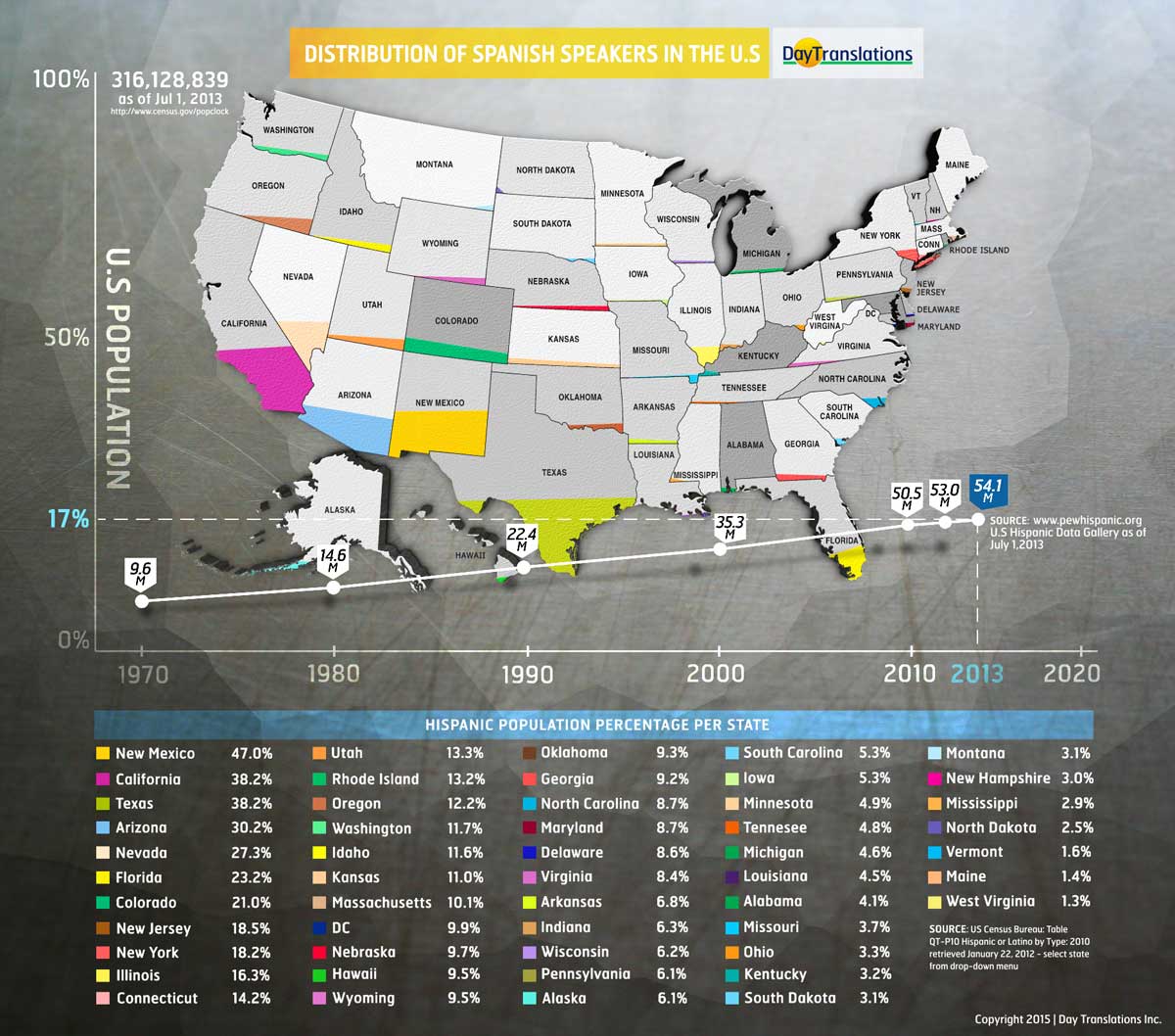A study by the Urban Institute, which is based in Washington, D.C., revealed that there is a surge in the Hispanic population. The study, called Mapping America’s Future, took a look at the Hispanic population of Wyoming, Wayne, Pike, Monroe, Luzerne, Lackawanna and Columbia. The study projects that the current Hispanic population in these seven counties will increase three-fold by 2030. Currently the Hispanic population in these counties is about 67,220, according to the 2013 census figures.
Lure of these areas
Steve Martin, a researcher from the Urban Institute said that the rise in Hispanic population is brought about by the low cost of living. Many of those who moved to the identified counties came from major urban centers such as New York or Philadelphia. Most of them have lived in the United States for several years or may be second-generation immigrants. A majority of them speak English as their second language.
This infographic shows the distribution of Spanish Language Speakers in the United States, not per county but per state.
As close-knit as ever
Blanca Fernandez who is a Latino community leader in Scranton was born in the Dominican Republic. She said that many immigrants from her country found success in the United States and when they did, their families joined them as well. The Hispanic communities are very close-knit and family and friends usually speak in Spanish when they meet. Often, they would be seen supporting businesses that are Hispanic-owned.
Mr. Dionicio Fernandez, also from the Dominican Republic owns a grocery and deli store in the area. He knows almost all of his customers, often greeting them in Spanish. They gather at his store where they could find products and food items from South and Central America – things that remind them of their home country.
English lessons
Mr. Fernandez revealed that he did not suffer from discrimination and with him taking English lessons in the evening, he does not encounter any language barrier. However, a language barrier does exist outside of the community of Hispanics, according to Ms. Fernandez, who works as a translator/interpreter. She often sees people who have difficulty in communicating with police, federal and state representatives, lawyers and doctors. She is even familiar with some families where the parents do not speak English, thus their children struggle with the language as well. Those children who manage to speak English well are used by their parents to be their interpreters when they need to go to the doctor or any other institution or office.
Interpreting services
To cope with the growing number of Hispanics seeking medical services, the Chief Medical Executive of Geisinger Northeast, Dr. Robert J. Weil said that the Geisinger Health System added 60 computer devices throughout their health system to gain access to real-time phone-in interpreters.
Ms. Fernandez said that it is doubtful that an over-the-phone interpreter could give the same quality of interpreting work as someone who is in the same room or the way a bilingual doctor would be able to converse with a patient. She said that Spanish is a language that is complicated by several dialects and what a term’s meaning in one could be different in another.
She also volunteers as an interpreter for the local police in her community and she said that wrong interpretation could lead to complications, frustration and confusion and thinks that everything should be done right so that miscommunication is avoided.
















Facebook
Twitter
Pinterest
Google+
LinkedIn
Email